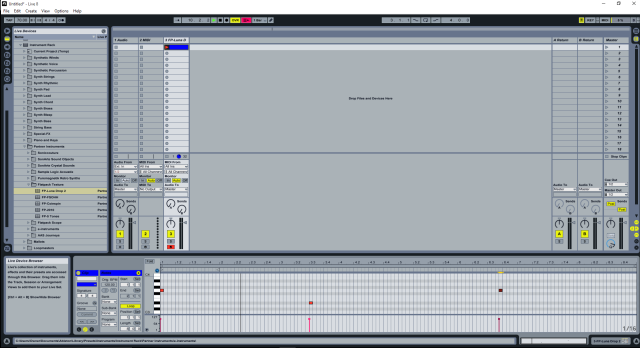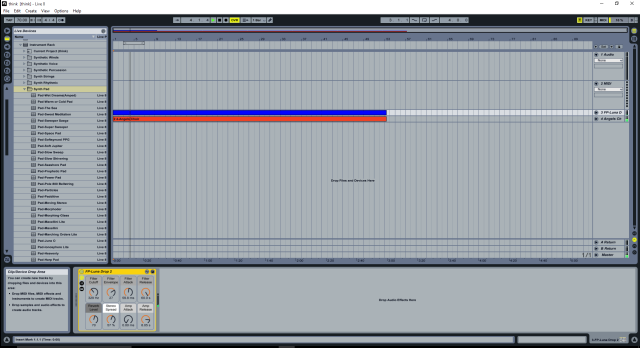Throughout the semester, the investigation of remix has opened my mind up to a new perspective of understanding this complex art form.
My exploration began with an introduction of what remix is perceived to be by exploring self as the foundation. Every day, as I see it, we remix ourselves. We remix our clothes, our demeanour, and the way we behave. We remix our diets, our attitudes, and our beliefs. The self that we were last year was a remix of the year before. Next year, I will be a remix of myself, a changed and remixed person, for better, or for worse, credited, in large part, to the decisions I made, and regrets I must accept. This alternative doctrine is a challenge to understanding what perception truly is. Remix is essentially the process of adding and subtracting interchangeable components at every turn. We adapt what is original, either deliberately, or unintentionally. Our core values are often remixed values from our parents and peers, and adapted to our modern times. And yet, our fundamental core beliefs can be held throughout time by people who fear change, or the multiplicity of life stages, therein.
The exploring of remix is often contested. In media, this can simply be a comparative process by analysing similarities in sound or image. For rock music band, Men at Work, sound became far too similar. Having included a recognisable sound in one of their tracks, opposition music label, Larrikin Music, sued the band for “stealing” the label’s ownership of familiarity for the track, Kookaburra Sits in an Old Gum Tree [1]. This unfortunately led to the death of a band member, who took his own life after not being able to cope with the humiliation of his original songwriting labelled as ‘fake’ [2]. If someone reinterprets any sound, or any artwork, the praise can be high, but the stakes can be even higher if someone is offended by a similarity. You are labelled a charlatan, a cheat, and someone that does not care if they steal. Ironically, however, the owner of the company may have stolen artworks displayed proudly throughout their house, or consumed food from recipes stolen from restaurants. Quite simply, their entire belief and success story may ultimately be based upon successful businessmen who had stolen ideas and objects from others before they were ‘copyrighted’.
I set out to explore change within myself. As an artist who prides himself on creating, or tracing, with individuality, I wanted to understand how remix began. I watched Kirby Ferguson’s documentary series, ‘Everything is a Remix’ [3], and I did not believe that everything is so specific. It is easy to pull things apart, and to show related cause. This is not an exact truth, but someone’s interpretation of what they perceive to be true. In school, we simply need to create enough links, enough background, and in writing with confidence, we often find ourselves recognised as high-achievers.
Artists have long been scrutinised for not being original, and my experience exploring the underground music scene in Australia has shown me that people will deliberately create something incredibly strange and weird, just to ‘think outside the square’. The very thought of creating anything for a purpose to be against something is confirming even more that it is there. In reading through KLF’s, “the Manual”, I found a strong, seemingly angry portrayal of the world of pop music [4]. It was a humorous tongue-in –cheek exploration of content, spun badly out of hand. This reading was informative, yet lacked sophistication.
A History of Remix explored the foundations of the art form through the extension of self-expression in Jamaica in the 1960’s and 1970’s. Modern Hip Hop is based on the cut-up Chic song, ‘Good Times’ [4], and the hip hop world exploded with cuts and samples, reworked to create cool, minimal sounding drum-heavy tracks. I looked heavily into the past, understanding what this word ‘post modernism’ actually meant. The very origins of the word initiate a period of change, where you can disrupt tradition, with no consequence. The word is also a rejection of the ideas of Modernism [5]. Brett Gaylor’s, RiP: A Remix Manifesto [6] talked about the entire concept of “ownership”, set with an optimistic tone. This documentary explored artists, such as Girl Talk, whose work is almost entirely composed from repurposed interpretations. An exploration of sound was explored through Coldcut’s, 70 Minutes of Madness, a challenging, and unique, complex sampling masterpiece [7].
Remix tools and techniques were explored from Russian montage images, to the Kuleshov effect, an effect demonstrated by Soviet filmmaker, Lev Kuleshov, during the 1910s and 1920s, to evoke particular emotions. Exploring the perspective of what montage is enhanced the ability to form multiple associations, depending on the context. This intended chain of association is formed from the power of editing. Focusing on creating powerful montages, capable of giving intense reactions, became the focal point for my pieces of work. Artistically, do we create things that will help us gain, or help us lose? There is always grey within emotion.
The work that I created for the individual assessments were often time consuming. They reflected blank open spaces to create what I think a remix is. While I would have preferred a guide to exploring suitable themes, it became clear that remix is really my own interpretation of what I want. Each image, video, or sound that I created was somewhat difficult to intentionally make, as I had no intention to make them in the first place. This experimental attitude to work was tiring, difficult, and often encouraged me to withdraw from my workspace in frustration. Certainly, self-doubt crept into my considerations, but sometimes the worst work I was producing were kept because I did not want to be consumed by the unknowing depths of blank space. Creating soundscapes with different sounds, however, was the highlight. And the exploration of videos, such as Pogo, Kutiman, Chemical Brothers, Bjork, and Kawehi expanded my range of perspective and individuality. This could contribute to creating my own music videos in the future.
Personally, I feel that stealing to create must not be something for people to be proud of, unless they make a conscious effort to recognise all the contributing artists who had laid the groundwork, and allowed this to happen. We are all influenced by various people, and we should, in every way possible, teach the world about those who have inspired us.
[1] – http://www.abc.net.au/news/2010-02-04/men-at-work-plundered-kookaburra-riff-court/321624
[2] – http://www.noise11.com/news/greg-ham-death-related-to-kookaburra-hearing-20120422
[3] – http://everythingisaremix.info/watch-the-series/
[4] – http://members.iinet.net.au/~ithompson/klf-book-themanual.pdf
[5] – http://www.jplimeproductions.com/nile-rodgers-profile-of-a-non-hip-hop-producer/
[6] – http://www.shiftingthinking.org/?page_id=53)
[7] – http://ripremix.com/
[8] – http://www.discogs.com/Coldcut-Journeys-By-DJ-Coldcut-70-Minutes-Of-Madness/release/154535





















